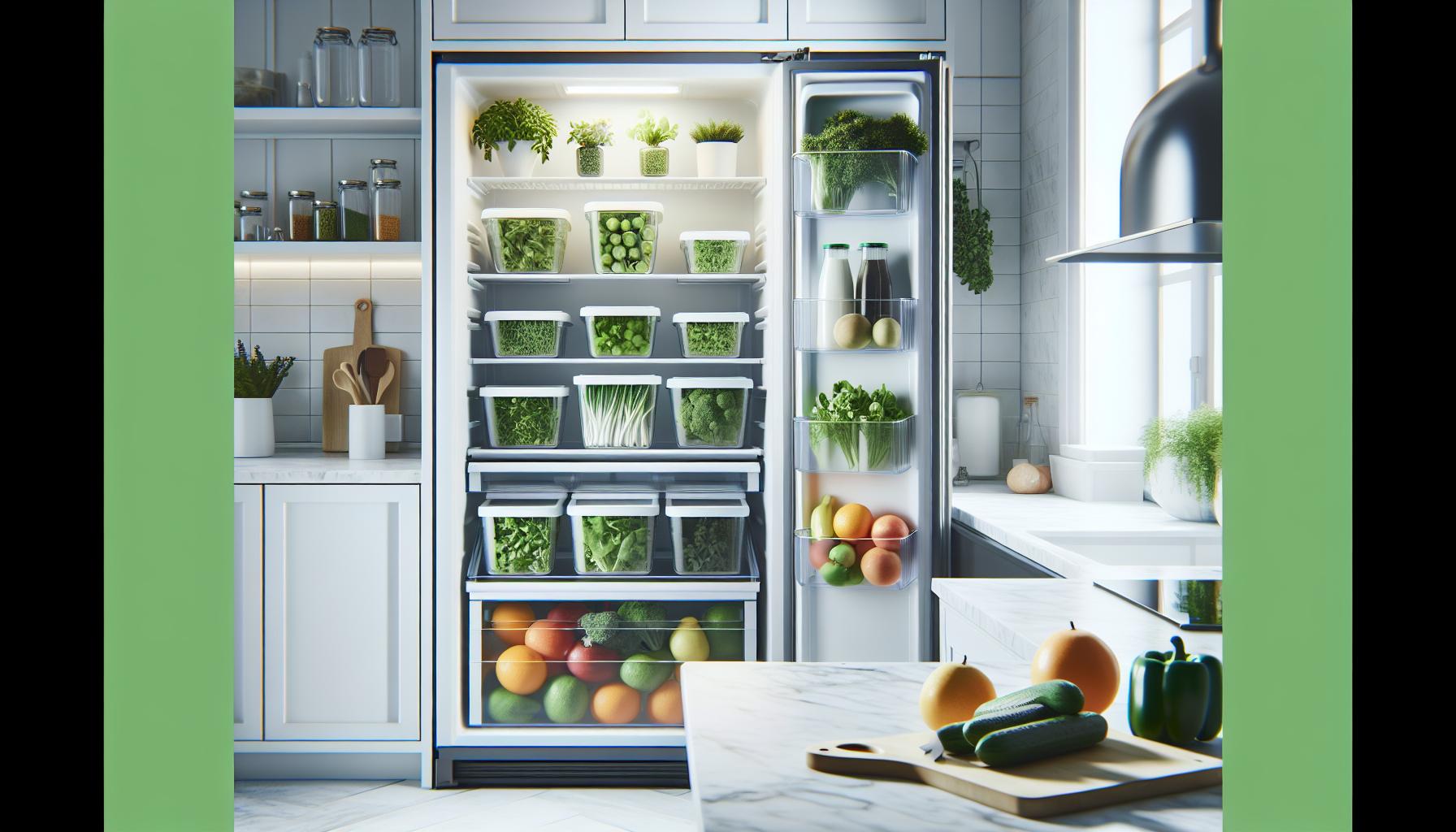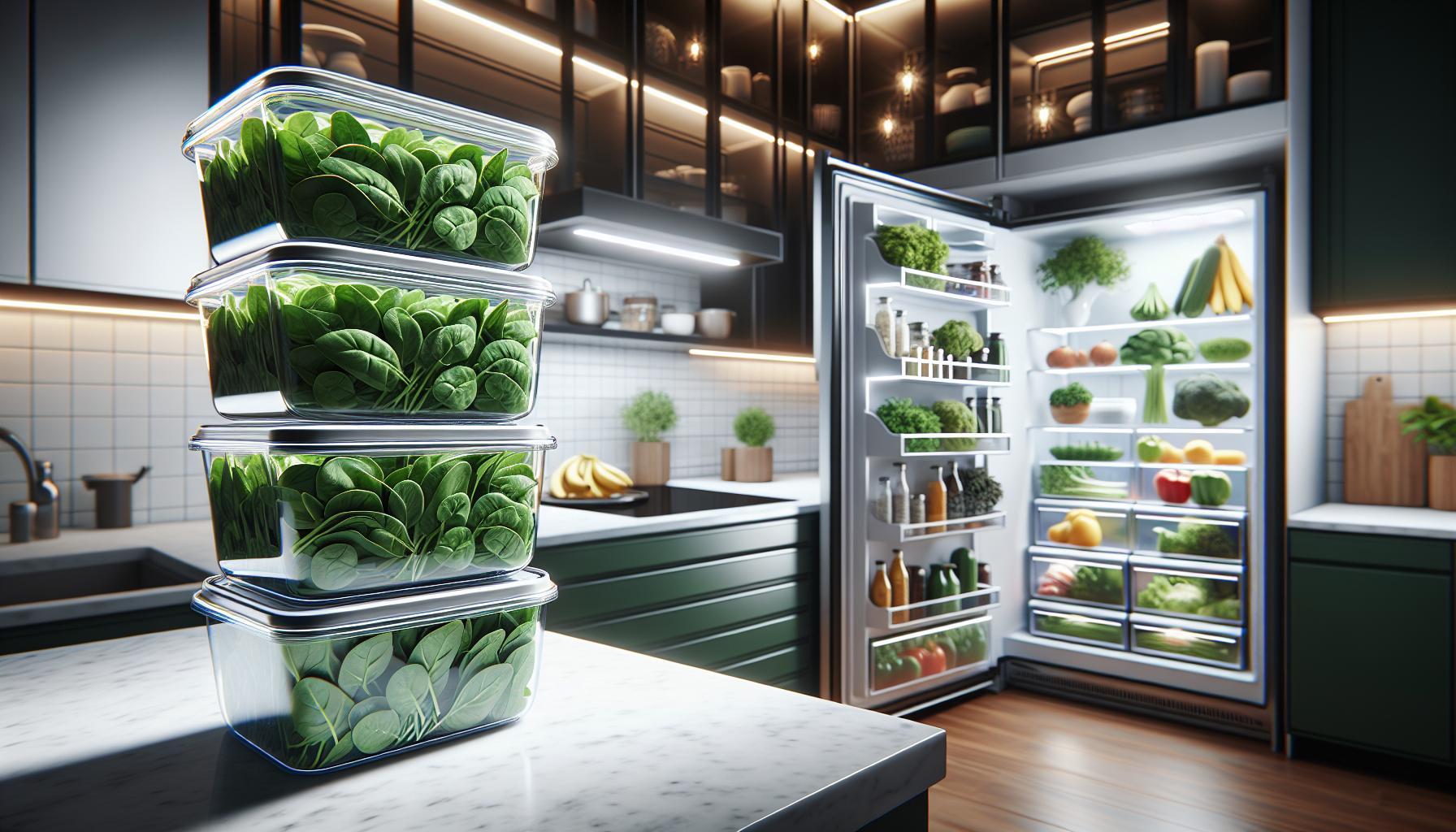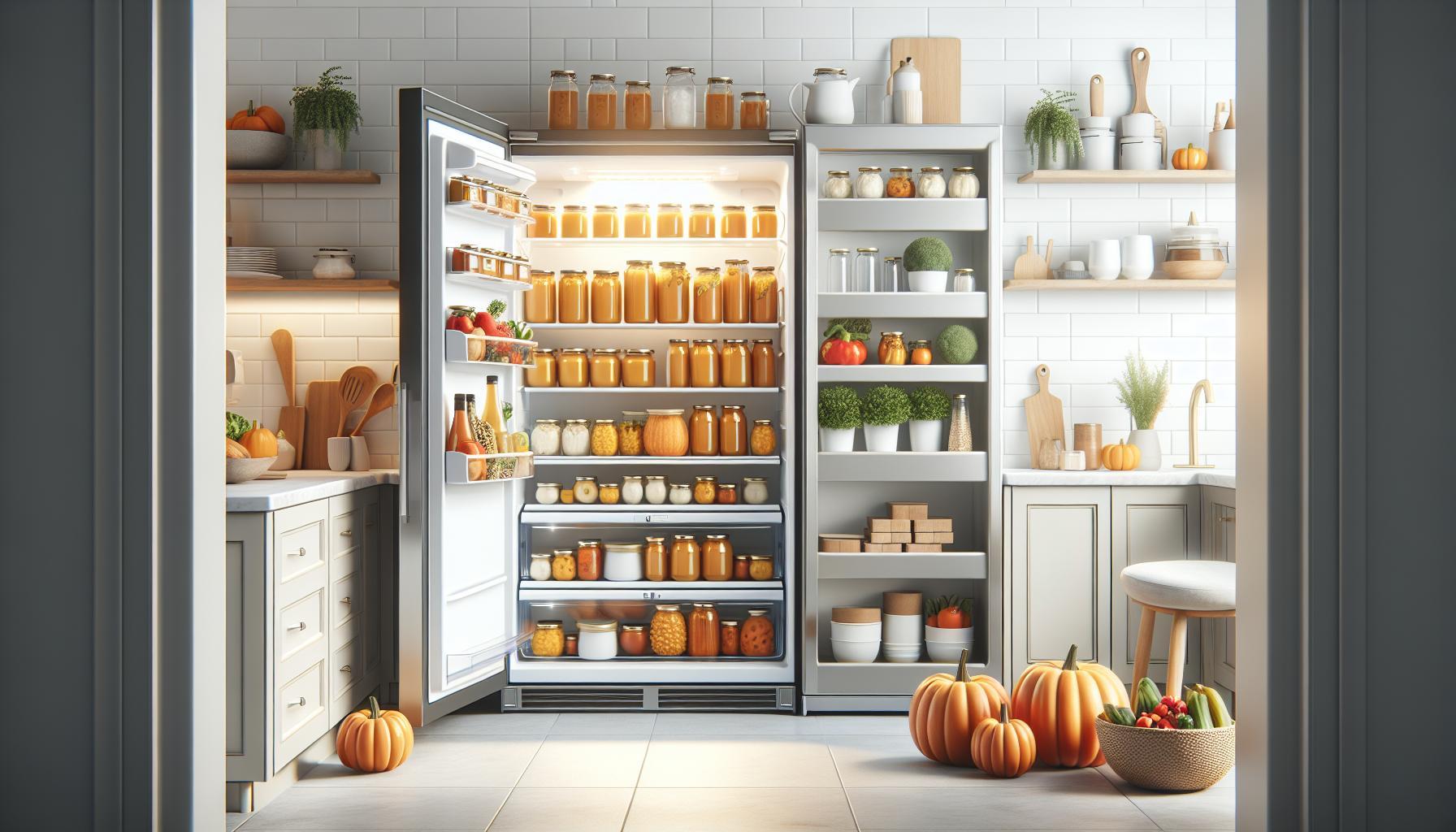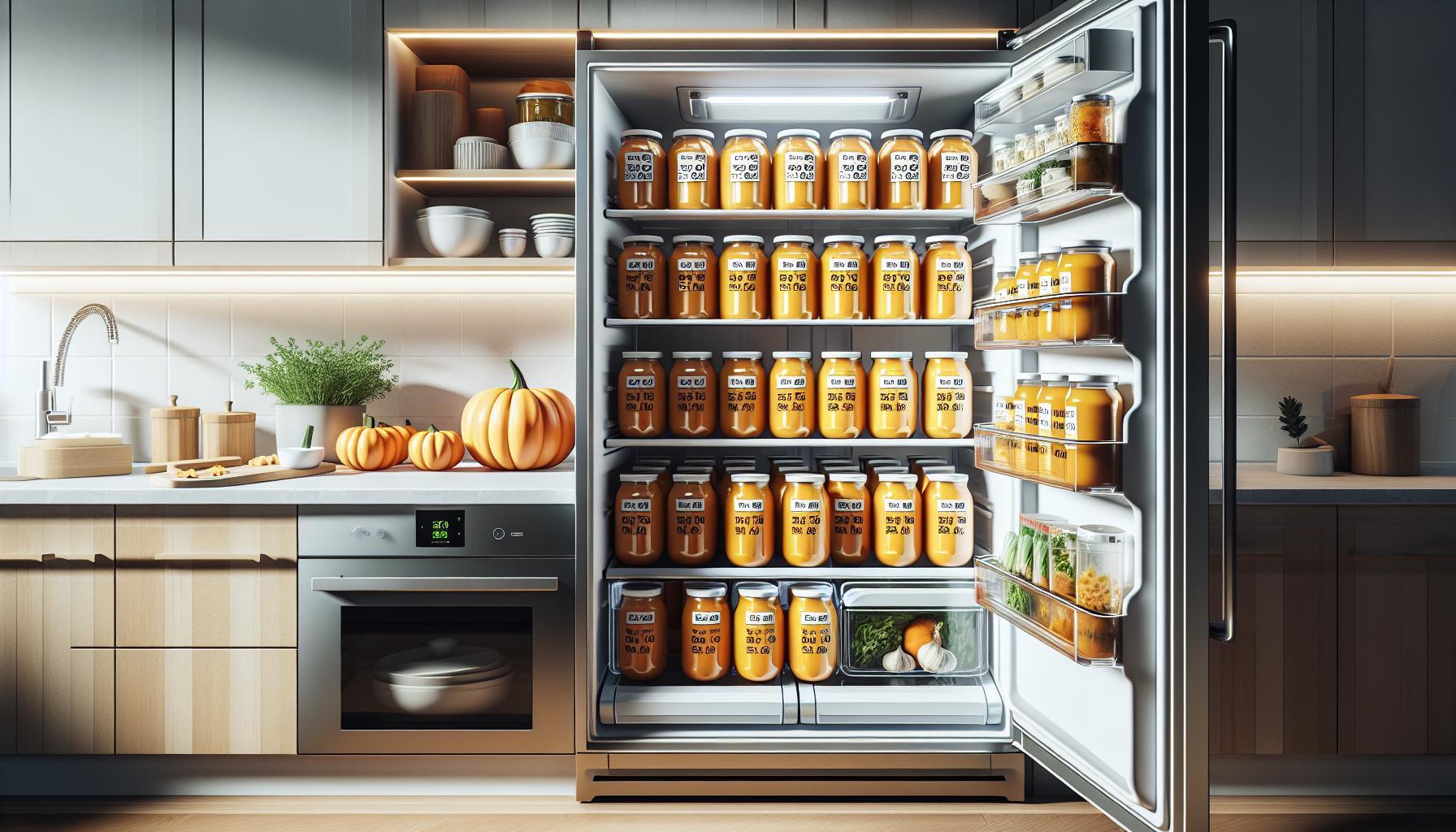Have you ever opened your fridge only to find your perfectly prepared salad wilted and unappetizing? Knowing how long salads last in the fridge is crucial for both food safety and enjoyment. Proper storage not only keeps your greens crisp but also prevents foodborne illnesses, allowing you to enjoy your meals without worry.
Salads are a staple in healthy eating, often packed with nutrients, but their freshness can diminish quickly. Understanding the optimal storage practices can extend the life of your greens, ensuring they remain delicious and safe to eat. In this article, we’ll explore effective strategies to keep your salads fresh and provide essential guidelines on how long they last in the fridge.
Whether you’re meal prepping for the week or just want to enjoy leftovers, the right know-how can make all the difference. Dive in to discover tips that will help you maintain the quality and safety of your salads, keeping your meals vibrant and enjoyable.
How Long Do Different Salad Ingredients Last?
Understanding how long different salad ingredients last is crucial for maintaining freshness and safety. Each component of a salad has its distinct shelf life, which can significantly impact the overall quality. For example, leafy greens like spinach or romaine typically last about 3 to 7 days when stored properly in the refrigerator, while heartier greens such as kale can last up to 10 days.
Vegetables can vary widely in their longevity. Cucumbers and bell peppers generally remain fresh for about 1 week, while carrots and celery can last up to 2 weeks, granted they are stored in airtight containers or wrapped well. Protein additions, like cooked chicken or tofu, should ideally be consumed within 3 to 4 days. Dairy products such as cheese can typically last longer, around 1 to 4 weeks depending on the type, but once shredded or cubed, it’s wise to consume them within a week for the best quality.
Fruits used in salads, such as berries or apples, last about 3 to 7 days in the fridge. It’s important to note that once fruits are cut, their lifespan decreases significantly; consume them within a day or two to prevent spoilage. To help manage freshness, consider labeling containers with purchase dates. This simple practice can assist in rotating older items to the front, ensuring you enjoy your salads at their peak.
In summary, keeping track of each ingredient’s lifespan and adhering to proper storage practices can significantly extend the life of your salads, ensuring each bite is fresh and safe to eat.
Tips to Keep Greens Fresh Longer
Keeping leafy greens fresh and crisp requires a few simple but effective strategies. One crucial tip is to ensure that greens are completely dry before storage. Moisture promotes decay, so using a salad spinner to remove excess water or patting leaves dry with a clean kitchen towel is essential. After drying, store greens in a breathable container. Instead of using an airtight bag or container, consider wrapping the greens in a paper towel and placing them in a perforated bag. This allows for air circulation while still absorbing any excess moisture, extending their freshness.
Another effective method involves temperature regulation. Keeping greens cold is key; therefore, store them in the coldest part of your refrigerator, usually near the back. It’s also advisable to keep them away from ethylene-producing fruits, like apples and bananas, as these can accelerate spoilage. Adding a few ice cubes to your salad container can also help maintain a cooler temperature and keep greens crisp.
For long-term freshness, consider using a vacuum sealer. This method removes air, which can cause oxidation and decay. While vacuum-sealed greens can last significantly longer, aim to use them within one to two weeks for the best quality. Lastly, regularly check your greens for any signs of wilting or spoilage, and remove any affected leaves promptly to prevent them from impacting the rest.
By implementing these proactive storage techniques, you can significantly increase the lifespan of your salad ingredients, ensuring they remain vibrant, crisp, and safe to eat.
Signs Your Salad Has Gone Bad
Recognizing when a salad has gone bad is essential for maintaining food safety and quality. Spoiled salad ingredients not only lose their nutritional value but can also pose health risks if consumed. There are several telltale signs that indicate your salad has seen better days.
First and foremost, pay attention to the visual aspects of your greens. Fresh salad leaves should be vibrant and crisp. If you notice any discoloration, dullness, or brown spots, it’s a strong indication of spoilage. Here are some key signs to look for:
- Wilting Leaves: If the leaves feel limp or lack their usual firmness, they have started to lose moisture and vitality.
- Brown or Yellow Leaves: While some browning can occur naturally, extensive yellowing or browning suggests decay.
- Unpleasant Odors: A sour or off-putting smell is a major red flag. Fresh salad ingredients should have a clean, earthy scent.
- Slime or Excess Moisture: If your salad is pooling with moisture or feels slimy, bacteria might be developing, indicating it’s time to discard it.
- Mold: Any visible mold, especially on soft ingredients like tomatoes or cucumbers, is an immediate reason to toss the salad.
If your salad includes dressing, check for separation or an unusual texture. This can indicate that the dressing has spoiled, and it’s better to err on the side of caution. Typically, prepped salads stored in the fridge can last for about 3 to 5 days before signs of spoilage may appear; however, this timeframe can vary based on the specific ingredients and how they were stored.
In short, keeping a close eye on your salad’s appearance, texture, and smell will help you enjoy safe and delicious meals while avoiding potential foodborne illnesses. Always trust your senses – if something seems off, it’s best to discard the salad to ensure your health and safety.
Best Containers for Storing Salads
Choosing the right container for storing salads can significantly impact their freshness and longevity. The ideal container should not only seal tightly but also allow for breathability to prevent moisture buildup, which can lead to sogginess. A common misconception is that any airtight container will suffice; however, the type of material and design matters just as much as the seal.
For optimal storage, consider using glass containers with airtight lids. Glass is non-porous, preventing any absorption of odors and flavors, while being easy to clean and dishwasher safe. Additionally, these containers often come in a variety of sizes, making them suitable for both single servings and larger family portions. Another excellent option is plastic containers specifically designed for salads, which usually feature adjustable air vents. This feature allows excess moisture to escape, keeping your greens crisp. Look for BPA-free options to ensure safety.
Storage Tips for Container Use
- Pre-wash and Dry: Before storing, wash and dry your greens thoroughly. Excess moisture can lead to faster spoilage.
- Layer Mindfully: For salads with multiple ingredients, consider layering to prevent heavy items from crushing delicate greens. Place sturdier vegetables like cucumbers or bell peppers at the bottom, followed by grains, proteins, and finally the greens.
- Include Paper Towels: Adding a layer of paper towel within the container can help absorb any moisture that accumulates, extending freshness.
While the lifespan of prepped salads can vary, properly stored salads in the right containers can often last up to a week in the fridge. By utilizing suitable containers, you not only maintain the aesthetic appeal of your salads but also ensure they remain safe and delicious for your next meal. Trust these practical strategies to help you make the most of your greens while minimizing waste.
Storage Techniques for Prepped Salads
Storing prepped salads effectively can make a significant difference in maintaining their freshness and flavor, while also preventing food waste. To maximize your salad’s longevity, it’s essential to consider how certain ingredients react with each other and the conditions under which they’re stored. Generally, salads that contain a mix of fresh vegetables, proteins, and dressings can last for about three to five days in the refrigerator if stored correctly.
To maintain crispness and taste, start with a solid foundation-proper washing and drying of all ingredients. Excess moisture can lead to sogginess, so drying leafy greens thoroughly before storage is crucial. Using a salad spinner can efficiently remove water, ensuring that the greens stay crisp longer. Once dried, layer your ingredients wisely. Place firmer vegetables, such as cucumbers or bell peppers, at the bottom of the container to provide a cushion for the more delicate items like lettuce or herbs on top. If your salad includes dressing, consider storing it separately to prevent wilting until you’re ready to serve.
Another effective strategy is to use airtight containers that facilitate breathability. Look for containers with adjustable ventilation or consider using glass jars, which not only keep the ingredients visible but also do not retain odors. To further absorb moisture, place a paper towel inside the container; this can help prevent sogginess by soaking up any excess humidity. For salads combined with protein, ensure all components are fully cooled before sealing, as warm items can generate condensation.
To assist with long-term freshness, regular checks for spoilage are essential. Look for any signs of browning or slime, particularly on leafy greens, as these are indicators that the salad may need to be discarded. By employing these storage techniques, prepped salads can remain vibrant and safe to eat throughout the week, allowing for quick, healthy meals whenever hunger strikes.
How to Revive Wilted Greens
Wilted greens are often an unwelcome surprise when you reach for ingredients intended for a healthy salad. However, there’s good news: you can restore their crispness with a few simple techniques. The key is to hydrate and refresh the leaves, making them more appealing and palatable again.
One effective method involves soaking the wilted greens in cold water. Fill a large bowl or sink with ice-cold water and submerge the greens for about 10 to 15 minutes. This process helps rehydrate the leaves and can quickly bring back that desired crunch. After soaking, gently spin or pat them dry with a clean kitchen towel or paper towels to remove excess moisture. This step is crucial, as damp greens can lead to sogginess and spoilage if not dried properly.
Another technique is to give your greens a cold shower. Run cold water over them in a colander for a few minutes. This method can be particularly effective for leafy greens like romaine or spinach. Just like soaking, this refreshes their texture but requires careful handling to avoid bruising.
If you find your greens still lack that fresh, crisp bite after these methods, consider adding a splash of apple cider vinegar or lemon juice to the soaking water. Not only does this provide a flavor boost, but the acidity can help retain the greens’ vibrant color and nutritional value. For a more robust approach, you can also store your revived greens in a container lined with damp paper towels, which keeps them moist without making them soggy.
Remember, while reviving wilted greens can extend their usability, it’s essential to be mindful of their initial freshness. Always examine them for any signs of spoilage, such as a slimy texture, foul odor, or significant browning. If any of these are present, it’s best to discard the greens to ensure food safety. By employing these techniques, you can reduce waste and enjoy fresh, crisp salads, even from greens that have started to wilt.
Safety Tips for Refrigerating Salads
To keep salads fresh and safe in the refrigerator, understanding some basic food safety practices is essential. Salads, especially those with dressings or perishable ingredients, can become breeding grounds for bacteria if not stored properly. Most salads should ideally be consumed within 3 to 5 days of being prepared, but a few key practices can help maximize their shelf life and safety.
First, always store salads in airtight containers. This simple measure reduces exposure to air, which helps prevent spoilage and keeps your ingredients crisp longer. Additionally, it’s crucial to keep your refrigerator temperature at or below 40°F (4°C) to inhibit bacterial growth. If you frequently open your fridge, consider using a thermometer to monitor the temperature and ensure it remains consistent.
When preparing salads that will be stored for later consumption, be mindful of the ingredients. For instance, raw vegetables can generally last longer than those dressed with oil or vinegar. If possible, store dressings separately and only add them to the salad right before serving. This not only helps maintain the texture of greens but also extends the overall longevity of the dish. Moreover, keep in mind that ingredients like tomatoes and cucumbers can release moisture, leading to sogginess; storing these separately or using absorbent paper towels in your container can help mitigate this issue.
Regularly check salads for signs of spoilage, such as off smells, discoloration, or a slimy texture. If you come across any questionable ingredients, it’s best to discard those parts to maintain safety. Following these practices will not only keep your salads fresh for longer but also ensure they remain safe and enjoyable to eat.
Freezing vs. Refrigerating: What You Need to Know
Freezing salads might seem like a time-saving solution, but it’s essential to understand that not all salad ingredients freeze well. Most greens and delicate vegetables tend to become wilted, mushy, or unappetizing after being frozen. For example, leafy greens such as spinach, lettuce, and arugula will not retain their crisp texture once thawed, making them less desirable for salads. Instead of freezing the entire salad, consider freezing the components that hold up better, such as cooked grains or beans, which can be added to a fresh salad later.
When it comes to refrigeration, salads benefit from being stored properly to maintain freshness and crispness. Aim to consume salads within 3 to 5 days of preparation when refrigerated. To keep salad greens from becoming soggy, store them in airtight containers with a paper towel to absorb excess moisture. For best results, dress your salad only just before serving; this prevents sogginess and helps the greens maintain their texture.
If you do choose to freeze certain salad components, ensure they are properly blanched, sealed, and stored at 0°F (-18°C) or lower. Label your containers with dates and use them within 1 to 2 months for optimal quality. When you’re ready to use them, consider incorporating the frozen ingredients into warm dishes or soups, where the texture difference may be less noticeable, rather than trying to revive them for a fresh salad.
Ultimately, understanding the strengths and limitations of each storage method helps you keep your salads fresh and safe. By reserving freezing for more robust ingredients and utilizing refrigeration for your fresh components, you can maximize both the longevity and enjoyment of your salads.
Organizing Your Fridge for Salad Longevity
Keeping your salad ingredients fresh can be as simple as organizing your fridge effectively. A well-organized refrigerator not only helps maintain the crispness of greens but also ensures other ingredients are easily accessible and used before they spoil. One of the fundamental principles is to store salads and their components at the right temperature, generally around 35°F to 38°F (1°C to 3°C). This range slows down spoilage while preserving texture and flavor.
Start by designating specific sections of your fridge for salad ingredients. Use clear bins to separate different types of items such as leafy greens, chopped vegetables, toppings, and dressings. Label each bin for easy identification. For example, you can keep all leafy greens like spinach and kale in one bin and sliced cucumbers and cherry tomatoes in another. This segregation minimizes cross-contamination and makes it easier to see what you have available at a glance.
Once you prepare salads, consider using airtight containers to store them. Make sure to leave a little space at the top of each container to prevent crushing your greens. Including a paper towel inside the container helps absorb moisture, keeping the greens crisp longer. Remember to always place your containers on the middle shelves, where the temperature is most stable, rather than in the door, which experiences more temperature fluctuations.
For ingredients like nuts, seeds, or cheese that you frequently use in salads, keep them in easily accessible areas, possibly at eye level. Doing so encourages their use and helps reduce food waste.
Lastly, it’s wise to keep a “use-by” system in your fridge. When you purchase new greens or salad ingredients, place them at the back of the shelf and move older items to the front. This simple method encourages you to use ingredients before they go bad, ensuring you’re always eating the freshest salads possible.
Creative Ways to Use Leftover Salad Ingredients
Using leftover salad ingredients creatively can prevent food waste while simultaneously enhancing your meals. Many items typically found in your salad can easily be transformed into new dishes, allowing you to maintain a varied and exciting menu throughout the week.
One of the simplest methods is to incorporate leftover greens into your smoothies. Spinach, kale, and other leafy greens can blend seamlessly with your favorite fruits and yogurt, providing a nutrient boost to your breakfast or snack. For a hearty alternative, consider making a green frittata or omelet. Just chop up your leftover vegetables-like bell peppers, cucumbers, or tomatoes-and mix them with eggs for a delicious, protein-packed meal.
Don’t overlook grains! Cooked grains such as quinoa or farro can complement leftover salad ingredients. Mixing grains with extra vegetables, nuts, seeds, and your preferred dressing can yield a filling lunch or dinner option. Feel free to add in protein sources such as beans or chicken to make it a complete meal.
Additionally, leftover salad dressings can be used as marinades for meats and vegetables or as dips for snacks. If you have extra sliced cucumbers, bell peppers, or carrots, pair them with your dressing for a refreshing appetizer.
Lastly, if your salad ingredients are nearing their expiration, consider tossing them into a stir-fry. Many salad greens and extra veggies like carrots, snap peas, or zucchini can add texture and flavor to a quick and nutritious stir-fry. This method allows you to use multiple ingredients at once, minimizing waste and maximizing flavor in a single dish.
By utilizing these ideas, you can breathe new life into leftover salad ingredients and ensure nothing goes to waste while keeping your meals interesting and delicious.
Myths About Salad Storage You Should Ignore
Many people harbor misconceptions about how to store salads and keep them fresh. Understanding the truth can help you maintain your ingredients’ quality and flavor while preventing food waste. One prevalent myth is that all salad greens, once washed, should be tightly sealed in a container. In reality, lettuce and other greens need airflow to stay crisp. Instead, consider using a container that provides some ventilation, or wrap your greens loosely in paper towels before placing them in a perforated bag. This allows moisture to escape and prevents the greens from becoming slimy.
Another common belief is that all salad ingredients can be stored together without impact on freshness. For example, the ethylene gas produced by fruits like apples and tomatoes can hasten spoilage when stored with greens. Keep fruits and vegetables separated to prolong their lifespan. Additionally, many assume pre-packaged salad kits are immune to spoilage and can be stored indefinitely. These kits often contain dressings and other perishable components that can expire quickly. Always check expiration dates and use these kits within a few days of purchase, regardless of the packaging.
Some individuals think that browning on cut veggies, like avocados or apples, means the product is spoiled. While oxidation can affect their appearance, these items are often still safe to eat. A quick dip in lemon juice or vinegar can slow down the browning process and keep them looking fresh longer. Lastly, many believe that storing salad ingredients in the freezer is an optimal method for extending their life. In truth, most leafy greens do not freeze well and may lose their texture upon thawing. If freezing is necessary, consider blanching greens beforehand, but be prepared for changes in texture after freezing.
Frequently Asked Questions
Q: How long can I store a salad with dressing in the fridge?
A: A salad with dressing typically lasts 1-3 days in the fridge. To maintain freshness, store it in an airtight container and keep the dressing on the side if possible. Check for any signs of spoilage before eating.
Q: Can you eat salad that has been left out overnight?
A: It’s unsafe to eat salad left out at room temperature for over 2 hours. Bacteria can grow rapidly, increasing the risk of foodborne illness. Always refrigerate salads promptly.
Q: What are the best herbs to keep in salads for longer freshness?
A: Herbs like parsley, cilantro, and green onions can help enhance freshness in salads. They also add flavor and nutrients. Store salads with fresh herbs in a cool area or fridge, ensuring they remain dry to maintain crispness.
Q: How to tell if leafy greens in a salad are still fresh?
A: Fresh leafy greens should be vibrant and crisp. Look for vibrant color, a firm texture, and no sliminess or browning. If they appear wilted or have a sour smell, it’s best to discard them.
Q: Is it better to store salads in glass or plastic containers?
A: Glass containers are preferable for storing salads as they are non-porous and help prevent moisture buildup, keeping greens crisp. Plastic containers can trap moisture, leading to quicker spoilage.
Q: Can you freeze salads to preserve them?
A: Freezing salads is not recommended, as most fresh ingredients lose their texture upon thawing. Instead, consider freezing the individual ingredients and assembling the salad when ready to eat.
Q: How can I prevent my salad from getting brown?
A: To prevent browning, use acid, like lemon juice or vinegar, on cut ingredients. Store the salad in an airtight container and layer with paper towels to absorb excess moisture.
Q: What types of salads last the longest in the fridge?
A: Grain-based salads, such as quinoa or pasta salads, usually last longer than green salads, up to a week. They are less prone to wilting and spoilage compared to salads with fresh greens.
Concluding Remarks
Now that you know how long salads can last in the fridge and how to keep those greens crisp and safe, it’s time to put this knowledge into action. Remember, fresh ingredients not only enhance your meals but also keep your health in check. Be sure to check out our tips on meal prepping to maximize freshness or explore our collection of delicious summer salads for inspiration! If you have any questions or want to share your own salad stories, please leave a comment below. For more food safety guidelines and tasty recipes, don’t forget to subscribe to our newsletter. Keep your salads vibrant and your meals exciting-your taste buds will thank you!





